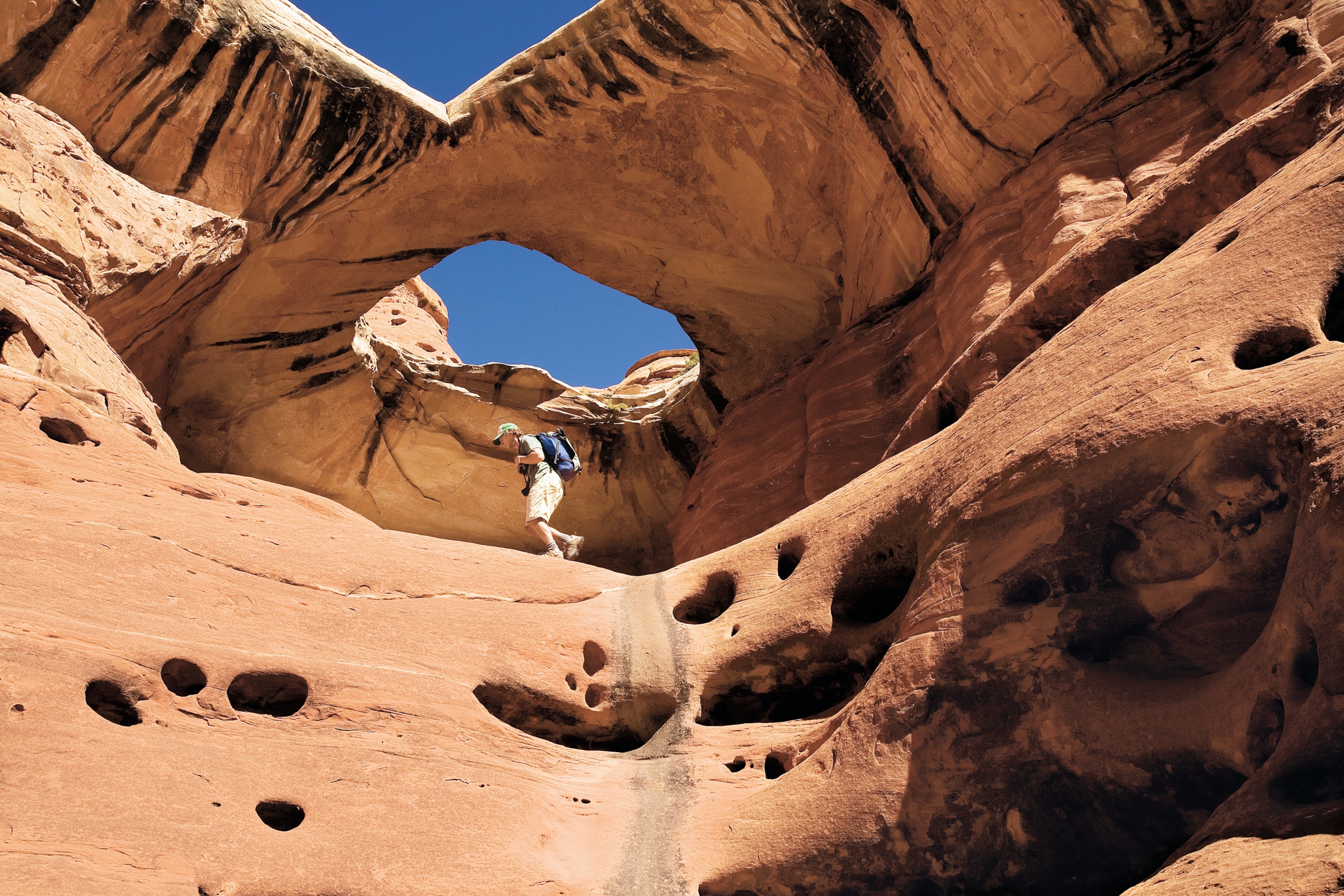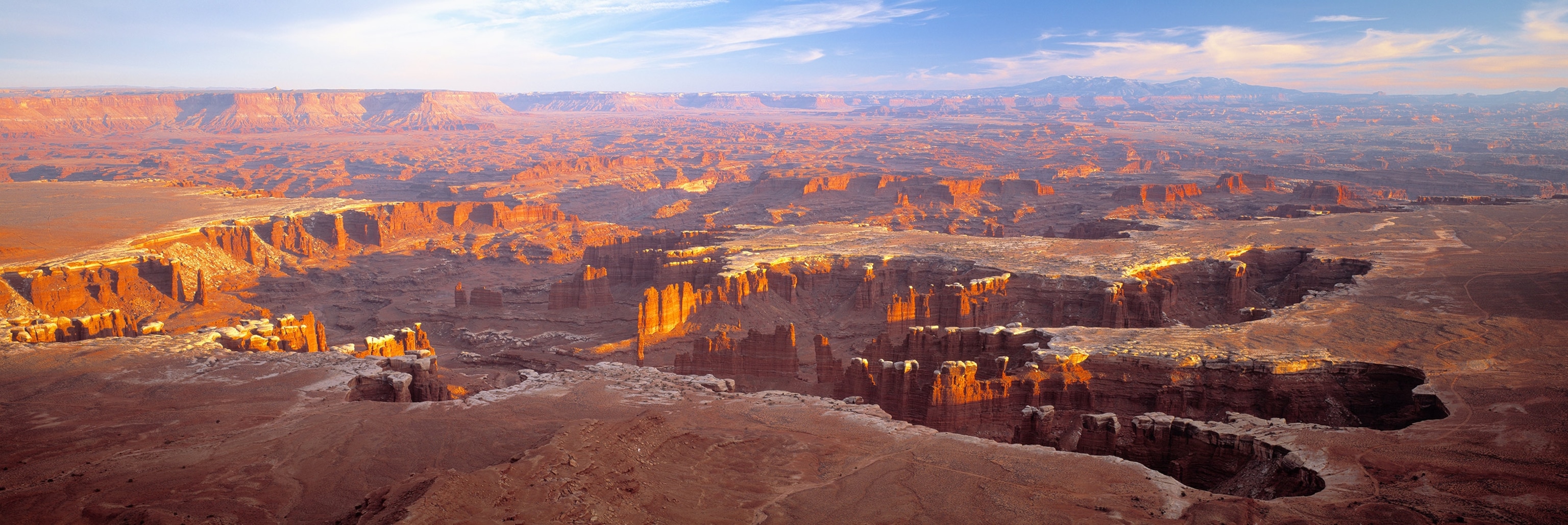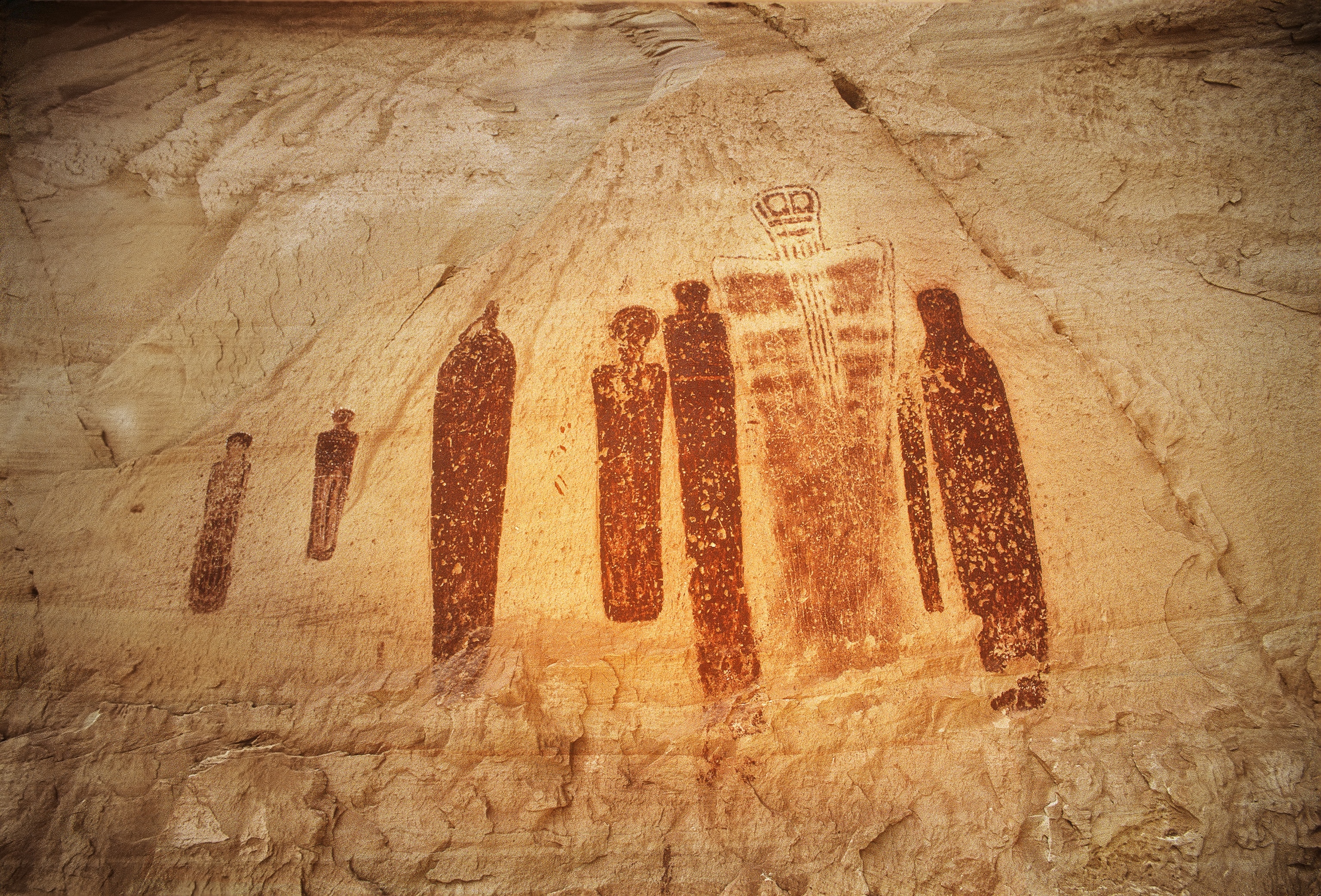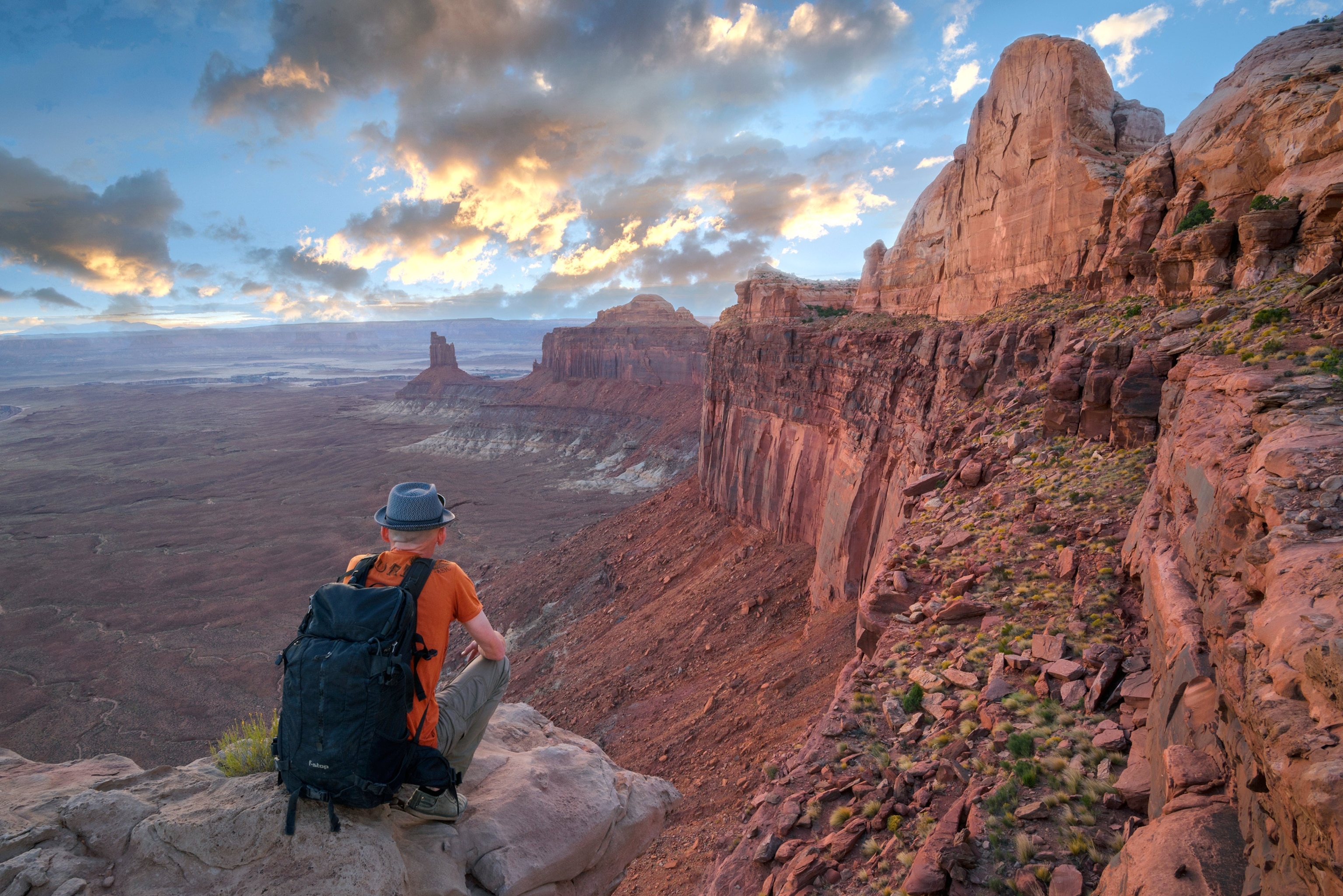See Some of the Most Significant Rock Art in North America
Canyonlands National Park is a striking landscape of canyon mazes, unbroken scarps, and sandstone pillars.
Location: Utah
Established: September 12, 1964
Size: 337,598 acres
From the rim you glimpse only segments of the Green River and the Colorado River, which flow together at the heart of Canyonlands. But everywhere you see the water's work: canyon mazes, unbroken scarps, sandstone pillars.
The paths of the merging rivers divide the park into three districts. The high mesa known as the Island in the Sky rises as a headland 2,000 feet above the confluence. South of the Island and east of the confluence is The Needles, where red- and white-banded pinnacles tower 400 feet over grassy parks and sheer-walled valleys. A confusion of clefts and spires across the river to the west marks The Maze, a remote region of pristine solitude. On every side the ground drops in great stairsteps. Flat benchlands end abruptly in rock walls on one side and sheer drops on the other. It is a right-angled country of standing rock, and only a few paved roads probe the edges of the park's 527 square miles.
Sandstone layers of varying hardness make up Canyonlands' visible rock. But the character of the land is largely shaped by underlying salt deposits, which, under tremendous pressure from the rock above, push upward, forming domes that fracture the surface.
Yearly rainfall averages eight inches but varies greatly from year to year. Trees that grow here have to be tough and resilient. In drought years, junipers survive by limiting growth to a few branches, letting the others die. Gnarled juniper and pinyon pine take root in the rimlands wherever soil collects, including slickrock cracks and potholes.
How to Get There
Island in the Sky District: From Moab (35 miles away), take US 191 north 12 miles to Utah 313 and proceed 23 miles southwest to the visitor center.
Needles District: From Moab (75 miles away), follow US 191 south to Utah 211 and then west for 34 miles to park entrance.
Maze District: From Green River, take I-70 west to Utah 24, then south to a well-marked dirt road leading 46 miles to Hans Flat Ranger Station.
Ground shuttles are available from Salt Lake City and Grand Junction, Colorado. Air shuttles fly between Canyonlands Airport and Denver and Las Vegas. The airport at Grand Junction is about 115 miles from The Island in the Sky.
- National Geographic Expeditions
When to Go
Spring and fall are ideal for exploring by foot or vehicle. Summer is hot, but humidity is low. Snow and cold can make it hard to get around in winter.
How to Visit
The park's isolation and preponderance of backcountry make visiting a spectacular experience, but there are few visitor facilities and paved roads. A four-wheel-drive vehicle will let you explore. If you have only one day, visit The Island in the Sky. On another day, go to The Needles for a chance to explore classic canyon country. With more time, focus on the hiking trails and four-wheel-drive routes to The Maze and other remote areas.















